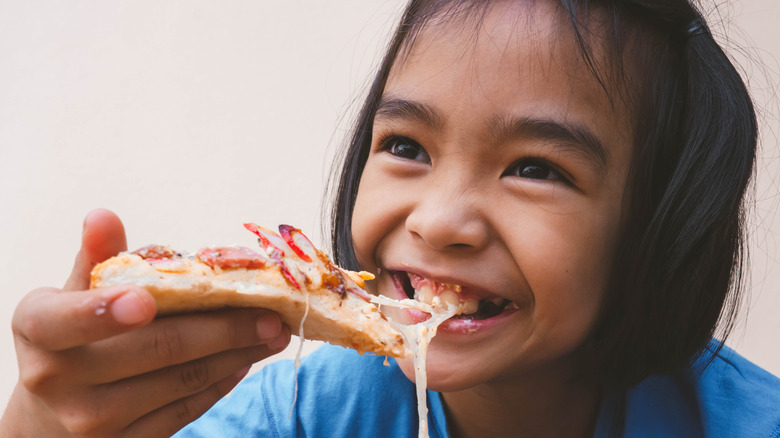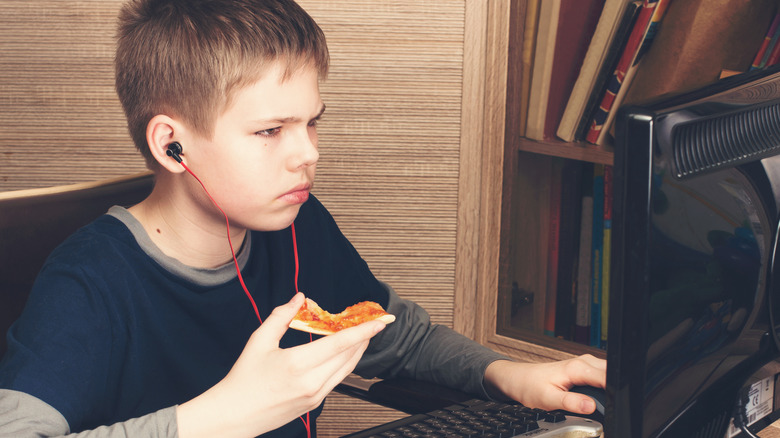Is YouTube's Food Ad Ban On Children's Content Actually Working?
Researchers investigating childhood obesity believe there is a clear link between the marketing of unhealthy food to children and an increase in the amount they consume. As well as television, online marketing is a major contributor to the promotion of fast food, with companies using commercials, product placements, and social media influencers to advertise their products. In fact, Obesity Evidence Hub reports, social media sites are significantly responsible for the sharing of such adverts, and watching food-related YouTube videos is specifically associated with children eating more junk food.
To try to combat the issue of fast food promotions inciting unhealthy eating, YouTube restricted the promotion of food and drink in January 2020. Along with various other topics such as politics, gambling, and alcohol, YouTube directs that any content made or intended for viewing by children must not contain advertisements for "products related to consumable food and drinks, regardless of nutritional content." This rule applies to adverts that pop up during videos, as well as for product placement.
The rule, although vague, appears to restrict the promotion of any food or drink, which means that the prevalence of such ads should be low. But is YouTube's ban on food and drink advertising to children actually working? We've taken a look at the facts to find out.
Food promotions are still being shown on kids' YouTube videos
Studies have been carried out to determine if YouTube's limits on food promotions aimed toward young people are working in reality. According to a study published in 2023 by Pediatric Obesity, 38% of 400 child influencer YouTube videos in 2019 and 2020 contained branded food appearances (and only one video clarified payment had been received for the ad). This means that either those incidents were coincidental (and probably unlikely to break YouTube's rule), or the content creator received an undisclosed payment — which should be a breach.
A 2022 New Zealand study published by BMC Public Health found that 13% of YouTube videos advertising junk food and beverages used tactics aimed at children. Google's directives state it will take down rule-breaking advertisements, and eventually ban the ad account if the actions continue. Google limits the reach of 511 million advertisements of "other restricted businesses" annually. This category includes food content for children, as well as official document sales, bail bonds, locksmiths, and more.
A YouTube search for "kid's McDonald's" brings up plenty of videos featuring branded food products that seem to be aimed at children, but simply showing the food and drink items doesn't breach the code. Instead, YouTube's policy relies on creators declaring they have been paid for food promotions — which obviously fails if the truth is withheld.

